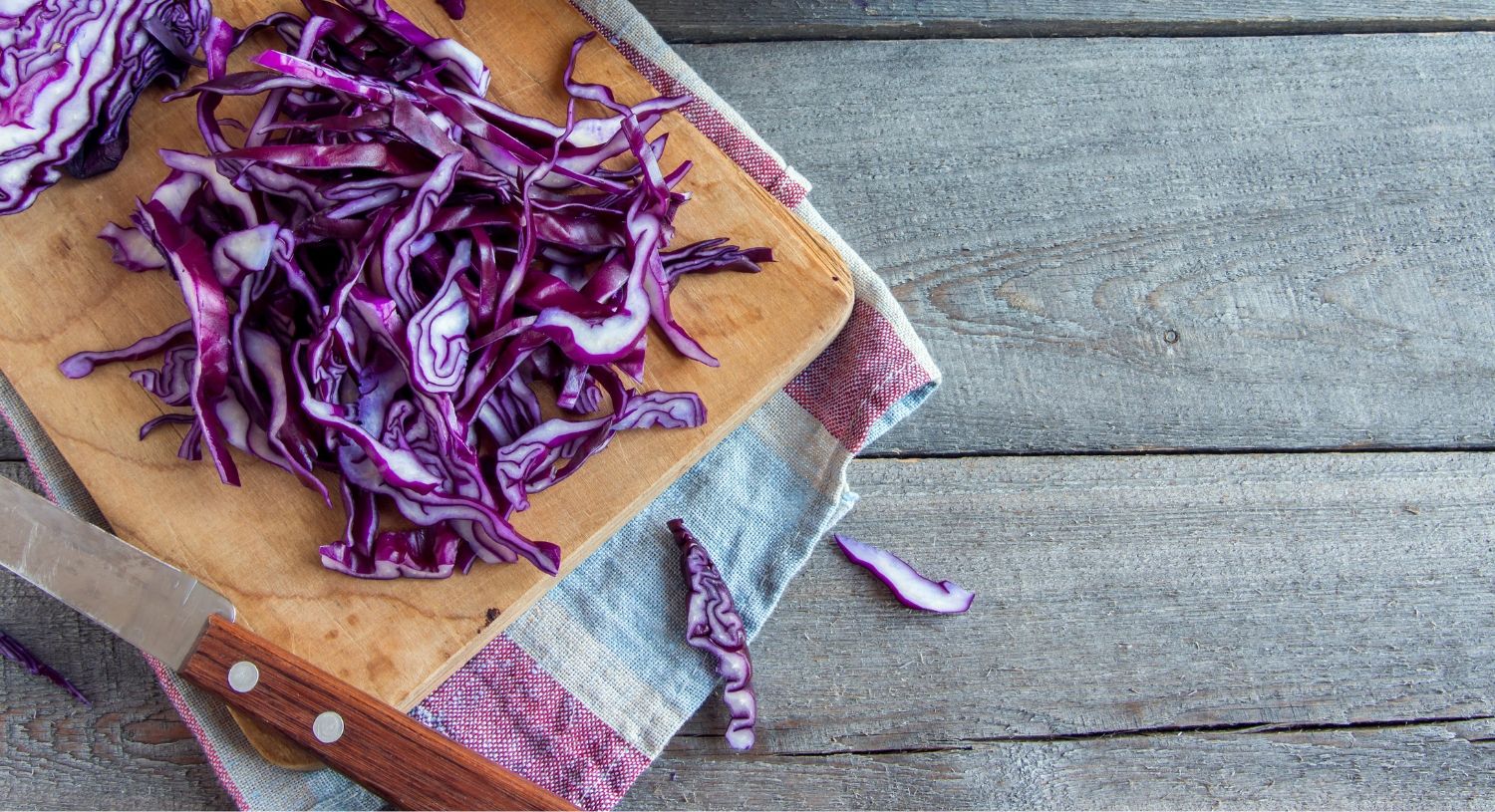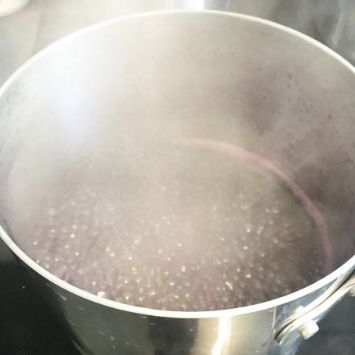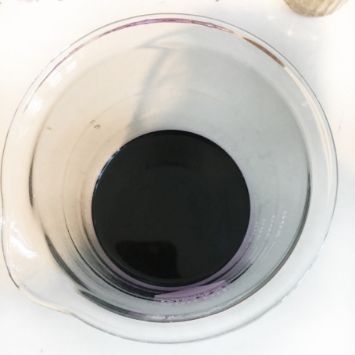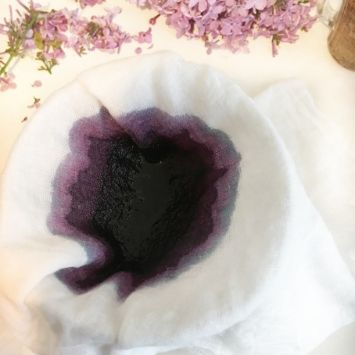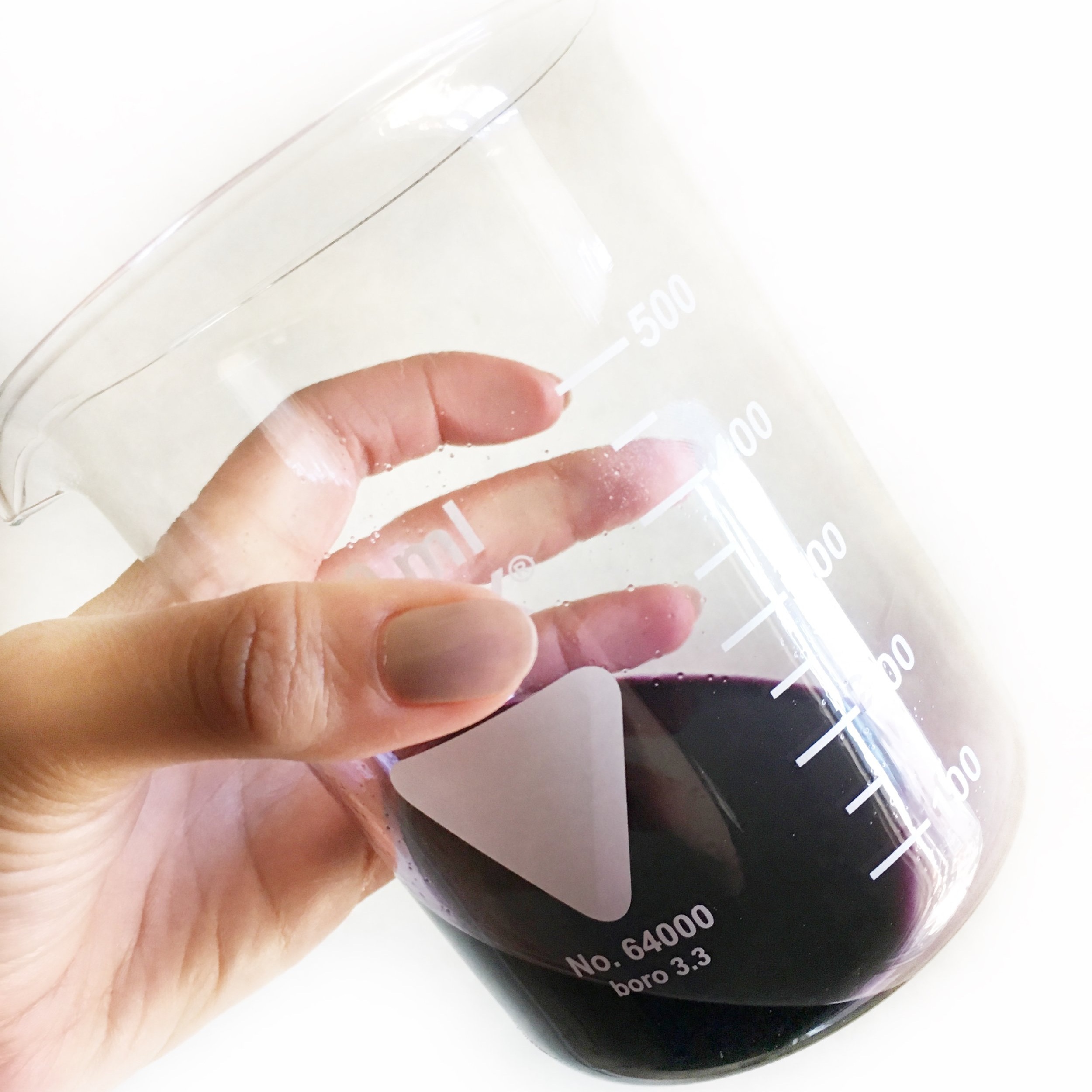Extracting Anthocyanins from Red Cabbage
I touched on anthocyanins in the post: Using Anthocyanins in Skincare, but briefly, anthocyanins are natural pigments found in plants that give them colours ranging from red to black. They are found in vegetables and fruit such as beetroot, red cabbage, sweet potato, blackberries, blueberries, red onion and many more. The brightly coloured plants you see around you, will likely contain anthocyanins as well as other colourful pigments. Anthocyanins are known to be a challenge to work with in natural cosmetic products as they are not particularly light, heat, pH or oxygen stable, but they are intriguing.
Despite the challenges, I wanted to do an extract of red cabbage, just to see how it turned out. I may decide to take a punt and use it in some water based products, but for now this is a tutorial on the method I used to extract the bright purple from this well known and loved leafy vegetable.
Anthocyanins in Red Cabbage
Red cabbage is from the brassica family, as are all cabbages. For clarification, red cabbage and purple cabbage are the same thing, their appearance may be different depending on the pH of the soil they are grown in. They can appear dark red in acidic soils, dark purple in neutral soil, and greenish to yellow in alkaline soil. These colour changes are directly related to anthocyanins, which are known to be changeable with pH. When cooked they normally turn purple and need adjusting with acidic ingredients such as vinegar or acidic fruit.
There have been 36 anthocyanins found in red cabbage. Approximately 80% of them are acylated, which are supposedly the more stable forms of anthocyanins.
Method of Extraction
Instead of using the usual herbalist extraction method, I took my inspiration from the textile industry, particularly the more traditional way of dyeing natural fibres. Instead of using a medium such as glycerine or alcohol, I boiled the cabbage in water for 30 minutes, removed the cabbage and boiled further to reduce the water content. I then added glycerine to preserve. Below, I give detailed instructions:
The Extraction
Method
Cut the red cabbage and add to a large bowl. I used a small cabbage, it was probably about 600-700g in weight
Cover with distilled water and bring to a boil
Reduce heat and leave to simmer for 30 minutes until you get a rich purple extraction
Remove from heat and strain through a sieve
Put the cabbage water back on the heat and simmer until it is greatly reduced
Strain through a cheesecloth
Weigh your final amount of extract and add an equal amount of glycerine to preserve
Notes
You will notice that I did not weigh or measure anything. I simply covered the cabbage with water, boiled and strained it. I was not sure how much active ingredient/plant extract is in this, so treated the infusion as 100% water in order to calculate the level of glycerine I might need. It was pure luck that I finished with a 100g sample after reducing the liquid. Although not so important to weigh at the beginning, it is important to weigh at the end so then you know exactly how much glycerine to add.
For greater accuracy, weigh the cabbage and the water amounts you use. However, the most important thing is to cover the cabbage with enough water to allow for a strong extraction. After the initial boil, you need to be reducing the water down anyway, to get a more concentrated extract.
If you want to make this at home, you can add an additional preservative. Before doing so, check the final pH and then choose your preservative based on the suppliers advice. If you need to reduce or increase the pH so that they are compatible with your preservative, do so, but be aware the colour of the solution will change depending on the pH.
Verdict
In the image to the left I altered the pH with a citric acid solution to give it a strong pink colour. You can adjust the pH after you have completed the extraction and keep it until you need it.
The cabbage extract has been in a clear jam jar since mid June and has not seen any colour change since I made it. The downside of using raw cabbage as a source of anthocyanin is, of course, the stench.

